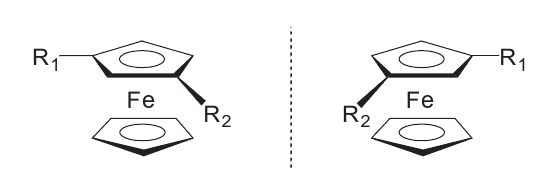-
Liquid-Crystalline Thiol- and Disulfide-Based Dendrimers for the Functionalization of Gold Nanoparticles
S. Frein, J. Boudon, M. Vonlanthen, T. Scharf, J. Barberá, G. Süss-Fink, T. Bürgi and R. Deschenaux
Helvetica Chimica Acta, 91 (12) (2008), p2321-2337


DOI:10.1002/hlca.200890253 | unige:14703 | Abstract | Article PDF
Liquid-crystalline dendrons carrying either a thiol or disulfide function which display nematic, smectic A, columnar, or chiral nematic phases have been synthesized. Their mesomorphic properties are in agreement with the nature of the mesogenic units and structure of the dendrons. The first-generation poly(aryl ester) dendron containing two cyanobiphenyl mesogenic units was used to functionalize gold nanoparticles. For full coverage, a smectic-like supramolecular organization on the nanometer scale is observed, when the gold nanoparticles are spread onto carbon-coated copper grids. This result indicates that the dendritic ligands reported here act as self-organization promoters.
